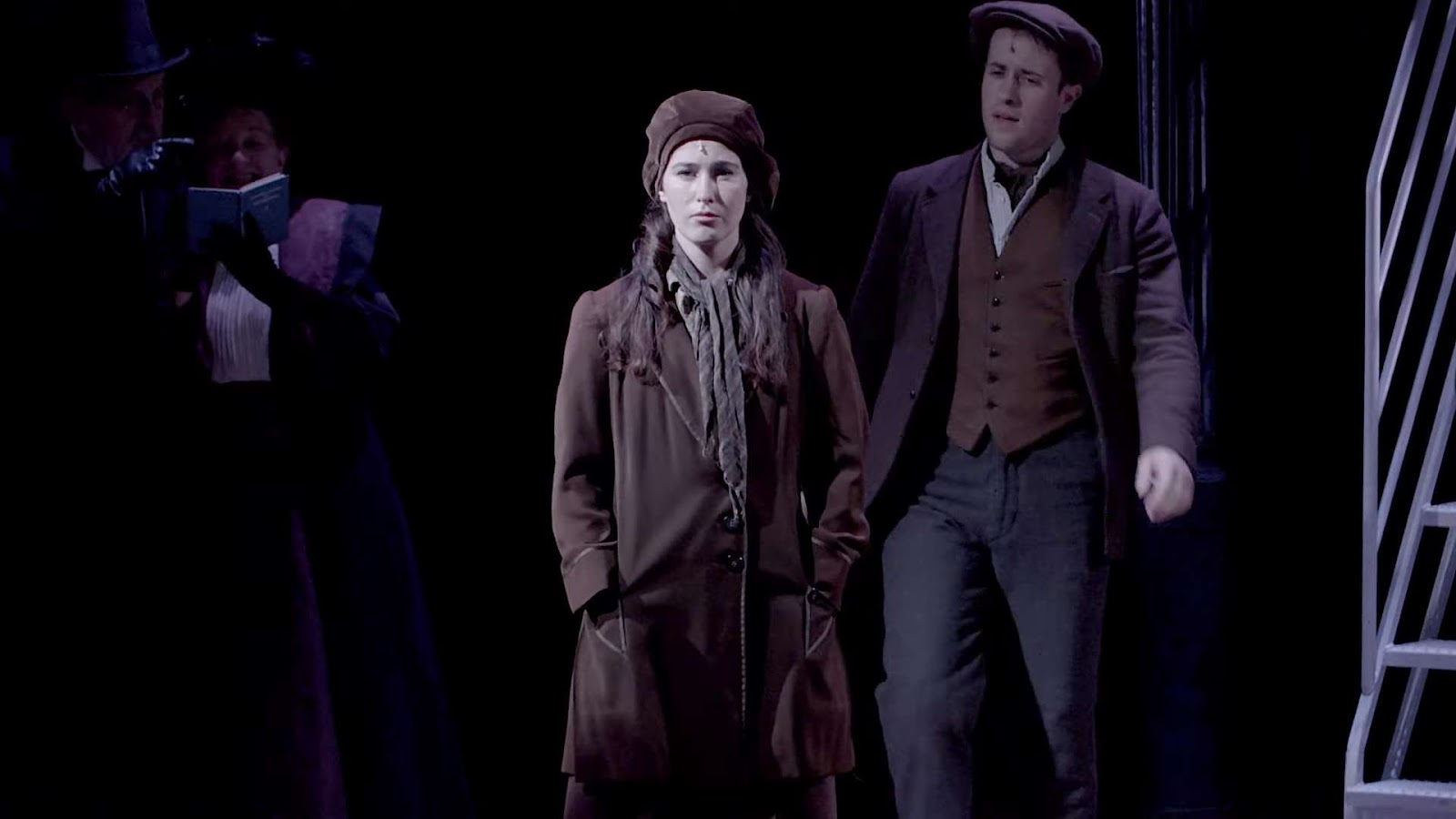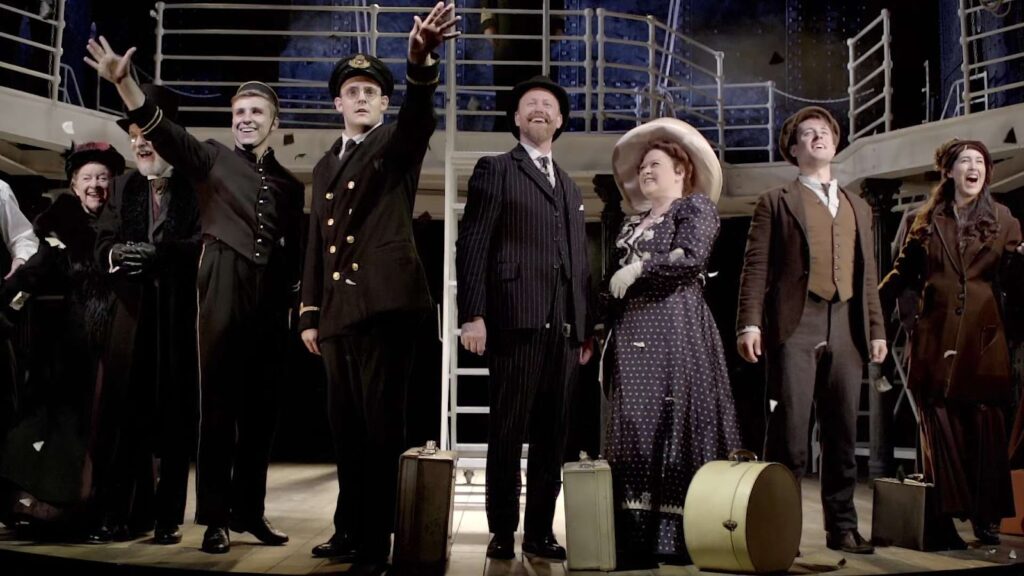
Exploring the Majestic Grandeur of the Hippodrome Titanic
In the heart of Birmingham’s vibrant theater scene, a historic ship sets sail once again, not on the tumultuous waters of the North Atlantic, but on the captivating stage of The Hippodrome. “Titanic: The Musical” has arrived in town, promising to whisk audiences away on a poignant and melodious journey through one of history’s most iconic tragedies. This thrilling production, based on the legendary story of the RMS Titanic, brings to life the remarkable tales of those who sailed on the ill-fated vessel, their hopes, dreams, and the fateful night that forever changed the course of maritime history. As the curtain rises at The Hippodrome, Birmingham, theatergoers can expect a mesmerizing blend of powerful storytelling and unforgettable music that will leave them deeply moved and inspired. Join us as we embark on a preview of this spectacular musical event that has taken Birmingham by storm, proving that the legacy of the Titanic continues to resonate in the hearts of all who experience it.
Navigating the Titanic’s Ill-Fated Maiden Voyage
The Titanic’s maiden voyage, often referred to as one of the most tragic events in maritime history, presents a storytelling challenge like no other. The Titanic’s first four days at sea were uneventful, lulling passengers into a false sense of security. However, on the fateful fifth day, disaster struck when the colossal ship struck an iceberg. What followed was a whirlwind of events, marked by chaos and swift decision-making.
The Calm Before the Storm:
- The first four days of the Titanic’s voyage were marked by tranquility and anticipation among passengers;
- Passengers reveled in the ship’s luxurious amenities, dining extravagantly and attending elegant parties;
- Titanic’s opulent interior and cutting-edge technology were the talk of the era.
The Catastrophic Collision:
- On the fifth day, tragedy struck as the Titanic collided with an iceberg, causing widespread panic and chaos;
- The ship’s crew and passengers were suddenly thrust into a life-or-death situation;
- The jarring impact sent shockwaves through the vessel, shattering the illusion of invincibility.
A Slow Unfolding Tragedy:
- After the lifeboats were launched, a haunting slowness enveloped the Titanic as it began its descent into the icy depths;
- The eerie stillness contrasted with the frantic moments preceding the evacuation, creating an agonizing atmosphere of impending doom;
- Those aboard the sinking liner faced a harrowing wait for their fate, while survivors watched in horror from the lifeboats.
Breaking the Iceberg of Narrative Challenge
In the epic 1997 film adaptation of the Titanic tragedy, filmmakers employed a creative solution to tackle the structural challenge of storytelling. They wove a fictional Romeo and Juliet love story across the rigid class divisions of the ship. This narrative device served to humanize the disaster, making it relatable to audiences.
Creating Relatable Characters:
- The 1997 film introduced characters from different social backgrounds, emphasizing their love story as a central plot;
- By focusing on a passionate relationship between Jack and Rose, the film broke down the barriers of class, allowing viewers to connect with the characters.
Titanic – The Musical’s Unique Perspective:
In 1997, Titanic – The Musical took a different approach by creating a web of characters based on real individuals who sailed on the Titanic.
This musical delves into the imagined relationships between these passengers, offering a multifaceted view of the human drama aboard the ship.
- Shifting the Humanitarian Lens:
- These creative adaptations aim to break up the incomprehensible humanitarian scale of the disaster into relatable fragments;
- They provide insight into the personal lives, struggles, and connections of those aboard the Titanic.
- The Music That Missed the Boat
- While these adaptations successfully humanized the Titanic tragedy through character-driven narratives, the same cannot be said for the music employed in Titanic – The Musical.
- Drawbacks of the Musical Score:
- Despite the well-drawn characters and engaging storylines, the musical falls short in terms of its music;
- The musical score fails to capture the emotional depth and intensity of the Titanic’s final moments.
- Music, a crucial element in conveying the gravity of the situation, lacks the necessary impact.
- The Importance of Music in Storytelling:
- Music can enhance storytelling by evoking emotions, building tension, and creating a connection with the audience;
- In a disaster of Titanic’s magnitude, a powerful musical score is vital in conveying the enormity of the tragedy;
- The choice of music and its execution can profoundly influence the audience’s emotional engagement.
Maury Teston’s Score: A Blend of Sondheim and American Minimalism
Composer Maury Teston’s musical score for the production can be likened to a captivating journey through the realms of musical storytelling. Drawing inspiration from the illustrious Stephen Sondheim, Teston’s score is a testament to the power of text-driven, pattern-rich music. However, what sets it apart is its subtle infusion of American Minimalism, which breathes life into the composition with its extensive use of ostinato accompaniments. Here’s a closer look at the facets of Teston’s score:

- Sondheim’s Legacy: Teston’s score pays homage to the Sondheim school of composition, where the words take center stage. Every lyric is carefully crafted to convey the characters’ emotions, motivations, and inner turmoil;
- Patter and Rhythmic Intricacy: Throughout the production, Teston weaves intricate patterns and rhythms into the music, creating moments of delightful complexity. This musical patter serves as a canvas upon which the characters’ emotions are painted;
- American Minimalism: The score’s nod to American Minimalism is evident in its repetitive and hypnotic ostinato accompaniments. These musical motifs create a sense of continuity and drive, immersing the audience in the unfolding drama;
- Yearning and Surging Quality: Teston’s composition possesses a yearning, surging quality that truly shines in the grand ensemble and choral numbers. It’s during these moments that the music swells and envelops the audience, evoking powerful emotions;
- Serving the Action: The score is designed to seamlessly complement the on-stage action. When there’s movement, drama, or intense moments, Teston’s music is the perfect companion, heightening the overall impact of the scenes;
- Challenges in Static Plot: In moments of static plot development, where the focus shifts to character exploration and relationships, the score faces challenges. It can become repetitious and may not evoke the same emotional resonance, causing Act I to occasionally lose momentum.
Production: A Submerged Wreck Transformed
The stage for this production is a marvel in itself, immersing the audience into the depths of the story. Massive sheets of riveted steel line the set, creating an atmosphere that feels as if we are already within the submerged wreck. Here’s a closer look at the production elements:
- Immersive Stage Design: The use of riveted steel sheets sets the tone for the entire production, instantly transporting the audience into the heart of the Titanic’s tragedy. The set serves as a powerful backdrop for the unfolding drama;
- Flexible Acting Space: The split-level acting space is a masterstroke, providing flexibility for the actors to seamlessly move between scenes. This dynamic layout ensures that the action flows smoothly, enhancing the overall storytelling experience;
- Talented Cast: The production boasts a talented and dedicated cast, who pour their hearts and souls into their performances. Their commitment to their roles brings depth and authenticity to the characters, making them relatable and engaging;
- Stirring Ensemble Singing: One of the highlights of the production is the massed voices of the ensemble, delivering an awe-inspiring and emotionally charged wall of sound. These collective musical moments resonate deeply with the audience, leaving a lasting impact.
Act II: A Journey from Panic to Catharsis
In Act II, the production takes a poignant turn, skillfully depicting the growing panic and despair among the characters. It’s a powerful act that captures the essence of tragedy and catharsis. Here are the key elements:
- Panic and Despair: Act II brilliantly portrays the sinking of the Titanic, plunging the audience into the chaos and desperation that ensued. The performances and music combine to create an intense atmosphere of impending doom;
- A Moment of Stillness: Amidst the turmoil, there’s a poignant moment of stillness and reflection. This respite allows the characters and the audience to contemplate the gravity of the situation, creating a profound emotional connection;
- Catharsis Through Tragedy: Act II reimagines the first chorus, reframing it as an expression of catharsis rather than hubristic triumphalism. This clever device shifts the narrative from arrogance to humility, providing a poignant conclusion to the show.
In conclusion, Maury Teston’s score, the immersive production design, and the emotional journey of Act II combine to create a theatrical experience that is both thought-provoking and moving. The production handles its difficult subject matter with grace, respect, and restraint, leaving a lasting impression on its audience. Also, unveil the heartfelt journey in ‘prism birmingham rep’: Dementia’s emotional exploration by Terry Johnson. Don’t miss this powerful performance!
Conclusion
As the final notes of “Titanic: The Musical” fade into the air at The Hippodrome, Birmingham, it’s evident that this production has left an indelible mark on the hearts of its audience. With its impeccable cast, stunning sets, and a score that effortlessly tugs at the heartstrings, the musical has managed to breathe new life into the tragic tale of the RMS Titanic.
The Hippodrome, with its grandeur and history, provided the perfect backdrop for this remarkable production. It’s a reminder of the magic that can happen when a talented cast, a dedicated crew, and a passionate audience come together to tell a story that transcends time.
As we leave The Hippodrome, Birmingham, after witnessing “Titanic: The Musical,” we are reminded that the legacy of the Titanic endures not only as a tragic historical event but as a testament to the resilience of the human spirit. The musical has allowed us to remember, reflect, and pay tribute to those who were aboard that ill-fated voyage.